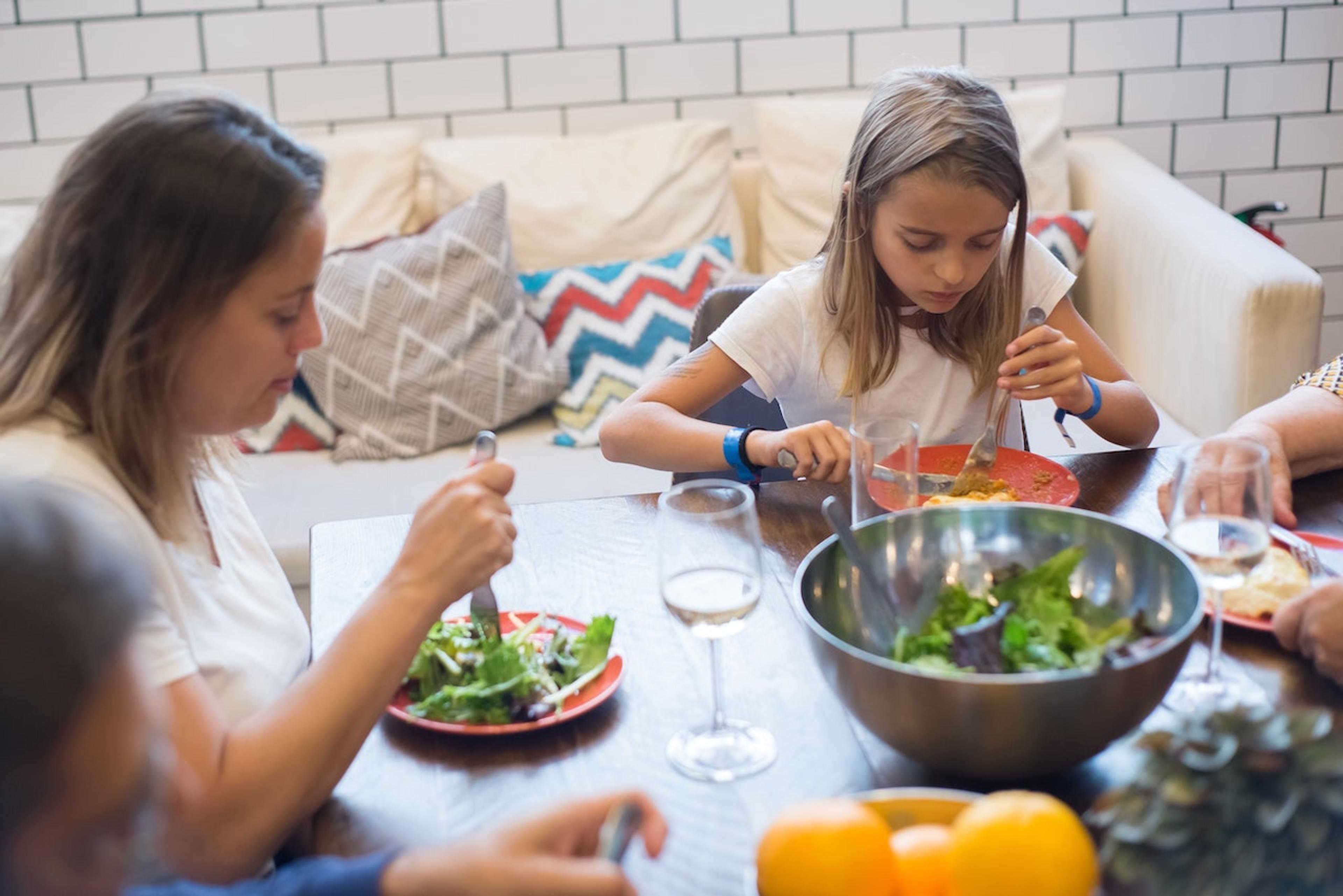
With so many different eating disorder treatment options, finding the right fit for your loved one can be an overwhelming process. One of the many challenges is the alphabet soup of treatment acronyms—PHP, IOP, RTC, CBT, DBT, FBT—you can encounter when trying to navigate the various approaches. To help clarify things, we'll break down one of the most important acronyms when it comes to eating disorder treatment for young people: FBT. So, what is FBT? Let's get into it.
What is family-based treatment (FBT)?
Family-based treatment, or FBT, is based on the Maudsley Method, developed at the Maudsley Hospital in London. Many people use the terms “FBT” and “Maudsley” interchangeably because their core approach is the same: young patients with eating disorders (who are medically stable) can recover at home with the support of their family.
FBT is considered the gold standard for eating disorder treatment in children, adolescents, and young adults, as a large body of research shows it to be the most effective approach for achieving lasting recovery.
For young people with an eating disorder, Equip almost always uses FBT, and it almost always works. In cases where FBT isn't the right approach, we'll switch to a different treatment approach.
What eating disorders can be treated with FBT?
Although initially developed to treat anorexia, FBT has shown promise as an effective treatment approach for many other eating disorders, including bulimia, binge eating disorder (BED), Avoidant/Restrictive Food Intake Disorder (ARFID), and Other Specified Feeding and Eating Disorder (OSFED).
Why is it called family-based treatment?
Family-based treatment can sometimes be confused with “family therapy,” and although there may be elements of family therapy incorporated into treatment, FBT is a separate model. It is a targeted, structured treatment for eating disorders that doesn’t presume any underlying problems within the family and is so named because families take on a central role in recovery.
With the ongoing support of trained healthcare professionals, family members are empowered to renourish their loved one. Families gain the knowledge, skills, and strategies they need to fight the eating disorder at home, one meal at a time.
What’s different about FBT?
Unlike many traditional talk therapy approaches, FBT targets eating disorder symptoms first. While it’s natural to wonder about possible causes of someone’s eating disorder, FBT is “agnostic,” which means that providers do not focus on searching for a cause. The good news is that we don't need to know the exact cause of someone’s eating disorder to treat it effectively.
Many traditional treatment approaches remove a patient from their home environment or tend to exclude parents from the recovery process. In FBT, however, patients get the support of their family—including chosen family—at every step of the way.
What does FBT look like?
In FBT, the initial focus is on renourishing the patient. This period of nutritional rehabilitation is so crucial because an undernourished brain is an anxious brain. Being weight-suppressed (under the weight the body prefers to be) further fuels obsessive and fearful thoughts about food and can make any body image concerns even worse. For patients who have lost weight or fallen off their growth curve, weight restoration to the right weight range for their body is a goal at the start of FBT. Even for patients who are not underweight, nutritional rehabilitation is essential: disordered eating habits like binge eating, purging, and restriction can lead to malnourishment, regardless of a patient's weight.
Nutritional rehabilitation involves supporting the patient to eat regularly, to eat enough, and to eat a variety of foods. This initial phase of treatment is sometimes referred to as “re-feeding.” In addition to addressing dietary restriction, families also support their loved one to cease any other eating disorder behaviors, such as vomiting, overexercising, or hiding food.
Once fully nourished and free from most, if not all, eating disorder behaviors, many people experience a significant reduction in their psychological symptoms, such as rigid or obsessive thoughts about food, severe body image distress, depression, and/or anxiety. At this phase of treatment, patients gradually relearn how to eat independently—without being controlled by their eating disorder or needing constant support from a loved one. Navigating this transition can be tricky for both patients and their families, so sessions focus on addressing any stumbling blocks along the way.
Later on in treatment, FBT sessions can shift focus to support a patient’s overall social-emotional development, such as navigating friendship challenges, improving communication skills, and learning additional healthy coping strategies for stressful times. Therapy sessions also address any remaining eating disorder symptoms or co-occurring mental health conditions. Patients and families explore factors that could contribute to re-activating eating disorder thoughts and behaviors; these triggers might include social media, peer pressure, and body image concerns. Building awareness of and resilience to these potential triggers is a key component of relapse prevention.
Why is FBT the gold standard of eating disorder care in young people?
FBT is so effective at treating eating disorders because it combines the most recent evidence-based clinical research with the power of family. Eating disorders are biological, brain-based illnesses, and FBT’s focus on nutritional rehabilitation and symptom reduction acknowledges that fact first and foremost. Armed with the knowledge that food is medicine, families can start to renourish their loved one even when the eating disorder is causing resistance and lack of motivation.
FBT helps patients stay in recovery because treatment is happening in the midst of the stressors and challenges of everyday life. Recovering at home means that patients are building the tools and coping skills they need all along the way, reducing the risk of relapse that can occur during a transition from a separate treatment setting back into real life.
No matter where it happens, eating disorder recovery is hard work, but undergoing treatment can be that much easier when surrounded by family members, friends, and the comfort of home.
How has Equip built upon FBT?
Helping a loved one recover from an eating disorder is no small feat. Many families find they need more support than weekly sessions with an FBT therapist in order to achieve full recovery. Equip builds on the foundation of FBT by making treatment fully virtual and adding the wraparound support of a dedicated 5-person care team, which includes a mentorship component.
In addition, because body image can be such a challenge for someone recovering from an eating disorder, Equip enhances traditional FBT by offering an evidence-based body image program for patients. Building body image resilience and body empowerment strengthens recovery and reduces the risk of relapse.
With virtual treatment, patients and families have more time to focus on life outside of the eating disorder, because we know that lasting recovery comes from building a life worth living. If you'd like to learn more about how FBT could work for your family, schedule a consultation.
While FBT is the most effective approach for young people with eating disorders, there are also evidence-based options for adults, like CBT-E (cognitive behavioral therapy for eating disorders), DBT (dialectical behavioral therapy), and ERP (exposure and response prevention), among others. At Equip, we tailor treatment to each patient's individual needs, regardless of age, and pull from a variety of evidence-based modalities to create individualized treatment that leads to lasting recovery.








